| MONTGOMERY COLLEGE | HOWARD COMMUNITY COLLEGE |
| ENGL102 | ENGL121 |
| FREDERICK COMMUNITY COLLEGE | PRINCE GEORGE'S COMMUNITY COLLEGE |
| ENGL101 | EGL1010 |
According to the College Board’s 2019 Trends in Higher Education report, the median earnings of bachelor’s degree recipients (with no advanced degree) working full time in 2018 were $24,900 higher than those of high school graduates, and $15,300 higher than those of associate’s degree graduates. That same report reveals that adults who have earned at least a bachelor’s degree are more likely to engage in educational activities with their family members, volunteer in their communities, participate in elections, and – believe it or not – exercise regularly.
In the biotech and human health fields, a bachelor’s degree is uniquely critical as careers in these fields require a broad skill set. In fact, most jobs in these areas require a bachelor’s degree, even for entry level positions.

Computational methods and data science are exploding into every facet of the world, particularly across engineering. There are very few degrees nationwide that combine the fundamentals in biology and quantitative problem-solving with computation and data science skills. This sets biocomputational engineering graduates apart from all others – including bioengineering, computer science, and biology graduates. – Dr. Jarred Callura, University of Maryland Biocomputational Engineering Professor
Think about some of the most common fields in human health today. Unlike decades ago, many of these now involve innovations in computer programming, statistics, and IoT (Internet of Things) technology in ways we never before could have imagined. Public and global health organizations rely heavily on biotech researchers who can lead investigations into the efficacy of therapeutic drugs and vaccines. Health care organizations increasingly turn to artificial intelligence, blockchain, interoperability, and cloud technology to develop new resources to improve patient care and outcomes, all while streamlining processes and automating tasks. And, at the root of it all, biotech companies look to statisticians and computer programmers to conduct pivotal analyses in order to shed new light on biological data.
Biocomputational engineers are among the best equipped to provide new insights that can shape the way biotech companies design their products, track disease spread, or even harness the power of everyday wearable devices similar to today’s FitBits and Apple Watches.
The A. James Clark School of Engineering is ranked among the top 25 undergraduate engineering programs according to the U.S. News and World Report. Clark School graduates instantly inherit a global network of nearly 45,000 Clark School alumni and 400,000 University of Maryland alumni. Just four years ago, an unprecedented investment of $219.5 million from the A. James & Alice B. Clark Foundation sparked the Fearless Ideas Mpact Challenge: a “moonshot” program designed to spur innovations in engineering research that have the potential to improve the lives of millions of people.
Our faculty are passionate about their work and dedicated to their students. More than 100 Clark School faculty members are fellows of engineering professional societies, and more than 50 are recipients of National Science Foundation Early Career Awards. Our Biocomputational Engineering faculty members are experts in this fast-evolving field – hailing from the biotech industry and research labs with experience working in artificial intelligence, medicine, data science, research and development for drug discovery, and more.
Within an hour’s drive from both the Universities at Shady Grove and the University of Maryland, College Park campuses are many of the nation’s top bioscience and biotech research forces and innovators – including the National Institutes of Health (NIH), and the National Institute of Standards and Technology (NIST) – as well as more than 500 biotech firms and 2,700 life science organizations. In addition, companies and firms like AstraZeneca, Kite Pharma, ACell, Precigen, and Novavax have a presence in the area, while GlaxoSmithKline (GSK) has a vaccine research and development center that’s less than a 10-minute walk from our Shady Grove campus!
Pursuing your University of Maryland degree at the Universities at Shady Grove offers a small, close-knit community with all the perks of a large university. As an enrolled Biocomputational Engineering student, you will have access to the same resources, such as career counseling and library services, available to all other UMD engineering students located on the College Park campus. Even more, at Shady Grove, you’ll have unique opportunities to network with and study alongside students from other University System of Maryland institutions, including the University of Maryland, Baltimore; Bowie State; Towson University; and the University of Maryland Global Campus.
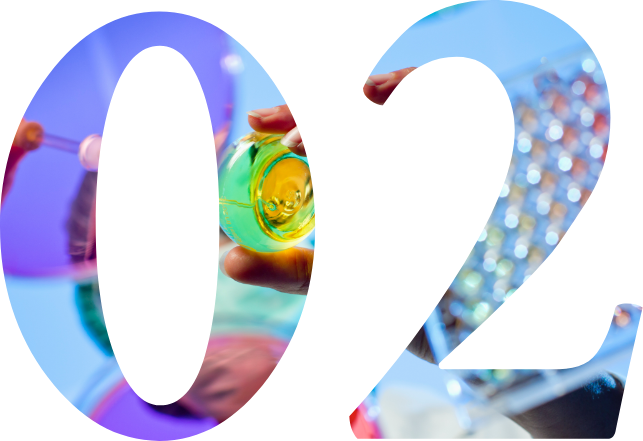
In addition to the College Park engineering resources, you will also have access to academic support services and campus resources designed for students enrolled specifically at Shady Grove. The Macklin Center for Academic Success at Shady Grove offers writing and academic coaching sessions, as well as tailored tutoring sessions for STEM majors. Free counseling services are also available through the Center for Counseling and Consultation. Beyond academic services, the Shady Grove campus offers a full-service Campus Recreation Center as well as a variety of ways for you to become involved and to meet other students, including numerous student organizations and campus-wide events.
Along with the wide array of campus services, the Biocomputational Engineering (BCE) degree program has prioritized the hiring of full-time faculty specifically to lead this cutting-edge new degree program. These faculty have years of experience in the biotechnology industry and will spend 100% of their time at the Shady Grove campus so they can easily interact with you inside and outside the classroom.
Courses for the BCE degree program will be taught at the new six-level, 220,00 square-foot Biomedical Sciences and Engineering education facility. This building features 20 fully-equipped teaching laboratories, a maker space for student research, expanded student services, and a dedicated laboratory specifically for the BCE degree program.
The Universities at Shady Grove campus and the Biomedical Sciences and Engineering education facility is packed with spaces for collaboration, research, and entrepreneurship mirroring those of a large campus – but with a more intimate and student-centered approach.
Bioengineering is steadily becoming the world’s largest industrial sector and, as a result, there is an increasing demand for doctors who are technically competent and for engineers who are properly trained in basic medical science. The bioengineering major covers the breadth of engineering fundamentals and biology, as well as depth into biomedical or biotechnology fields. It emphasizes hands-on experiences in instrumentation and wet lab biology skills.
In contrast, the biocomputational engineering major provides a foundation in engineering fundamentals and biology – and adds programming and data science skills. The BCE program also highlights computational courses in bioengineering including thermodynamics, and applied linear systems, as well as other more specialized elective courses – such as bioinformatics and image processing. Additionally, BCE students hone their programming languages and skills, such as Python, R, and C++, which are critical for data processing and visualization and computer simulations.
Perhaps most importantly, the new B.S. in Biocomputational Engineering degree program teaches contemporary statistical analysis methods, including various machine-learning methods, as well as solid biological applications of artificial intelligence. This intensive training in computational biology is uniquely available only through the BCE program.

While graduates will have the skills to take any programming or data science job, they will be ideal candidates for biotech firms and consulting firms who need problem solvers with knowledge of biology and medicine, and skills to analyze large and complex data sets.- Dr. Ian White, Associate Chair and Director of Undergraduate Studies at the Fischell Department of Bioengineering, University of Maryland
Those who are interested in biomechanics, biomaterials, biomedical devices, and fundamental biotechnology would likely find that the BIOE major is their best choice. Put simply: students who enjoy building things should choose BIOE over BCE.
Those who are comfortable working in a “dry-lab” environment – at the interface of biology, mathematics, computer science and data science – should select the BCE major. If coding – or even, thinking about how coding works – piques your interest, biocomputational engineering is the right path for you! Skills learned through this new degree program will prepare you for a variety of careers spanning the biotech and public health fields: whether you’re drawn to biotech consulting or health informatics, or you see yourself developing the next great innovations in health IT, a biocomputational engineering degree is your ticket to a future in human health innovation.
The BCE program, located at the Universities at Shady Grove in Rockville, MD, is specially designed to allow students from community colleges or four-year institutions the opportunity to complete their upper-level (years 3 and 4) degree requirements as a student of the University of Maryland’s A. James Clark School of Engineering. Interested BCE transfer applicants generally complete their first two years (60 credits) of lower-level STEM and general education studies before becoming eligible for transfer to the BCE program. Given the prerequisite course requirements, early planning is key to crafting a competitive application and ensuring a smooth transfer application process.

Prior to being admitted to the Biocomputational Engineering degree program, transfer students must complete the prerequisite math/science courses, lower-level General Education requirements (or an associate's degree), and a total of 60 credits.
To ensure a smooth transfer process, we recommend reviewing the below BCE admission requirements roadmap. While each prospective transfer student’s timeline and academic pathway is unique, we recommend that you begin planning your transfer pathway at the beginning of your academic career, or at least one year in advance of your expected transfer semester to the Biocomputational Engineering program.
Book a meeting with our STEM transfer coordinator to discuss BCE program and develop a transfer pathway.
Click on the course to view equivalent courses from Montgomery College, Howard Community College, Frederick Community College, and Prince George's Community College
| MONTGOMERY COLLEGE | HOWARD COMMUNITY COLLEGE |
| ENGL102 | ENGL121 |
| FREDERICK COMMUNITY COLLEGE | PRINCE GEORGE'S COMMUNITY COLLEGE |
| ENGL101 | EGL1010 |
| MONTGOMERY COLLEGE | HOWARD COMMUNITY COLLEGE |
| ENES100 | ENES100 |
| FREDERICK COMMUNITY COLLEGE | PRINCE GEORGE'S COMMUNITY COLLEGE |
| ENGR100 | EGR1010 |
| MONTGOMERY COLLEGE | HOWARD COMMUNITY COLLEGE |
| MATH181 | MATH181 |
| FREDERICK COMMUNITY COLLEGE | PRINCE GEORGE'S COMMUNITY COLLEGE |
| MATH185 | MAT2410 |
| MONTGOMERY COLLEGE | HOWARD COMMUNITY COLLEGE |
| MATH182 | MATH182 |
| FREDERICK COMMUNITY COLLEGE | PRINCE GEORGE'S COMMUNITY COLLEGE |
| MATH195 | MAT2420 |
| MONTGOMERY COLLEGE | HOWARD COMMUNITY COLLEGE |
| MATH280 | MATH240 |
| FREDERICK COMMUNITY COLLEGE | PRINCE GEORGE'S COMMUNITY COLLEGE |
| MATH285 | MAT2430 |
| MONTGOMERY COLLEGE | HOWARD COMMUNITY COLLEGE |
| MATH282 | MATH260 |
| FREDERICK COMMUNITY COLLEGE | PRINCE GEORGE'S COMMUNITY COLLEGE |
| MATH275 | MAT2460 |
| MONTGOMERY COLLEGE | HOWARD COMMUNITY COLLEGE |
| PHYS161 | PHYS110 |
| FREDERICK COMMUNITY COLLEGE | PRINCE GEORGE'S COMMUNITY COLLEGE |
| PHYS151 | PHY1030 |
| MONTGOMERY COLLEGE | HOWARD COMMUNITY COLLEGE |
| PHYS262 | PHYS111 |
| FREDERICK COMMUNITY COLLEGE | PRINCE GEORGE'S COMMUNITY COLLEGE |
| PHYS252 | PHY2030 |
| MONTGOMERY COLLEGE | HOWARD COMMUNITY COLLEGE |
| CHEM132 | CHEM 135 or CHEM102 |
| FREDERICK COMMUNITY COLLEGE | PRINCE GEORGE'S COMMUNITY COLLEGE |
| CHEM102 | CHM2000 or CHM1020 |
| MONTGOMERY COLLEGE | HOWARD COMMUNITY COLLEGE |
| BIOL150 or ENES120 | BIOL141 or BIOL120 |
| FREDERICK COMMUNITY COLLEGE | PRINCE GEORGE'S COMMUNITY COLLEGE |
| BSCI150 | BIO1140 |
| MONTGOMERY COLLEGE | HOWARD COMMUNITY COLLEGE |
| ENES240 or equivalent | ENES271 |
| FREDERICK COMMUNITY COLLEGE | PRINCE GEORGE'S COMMUNITY COLLEGE |
| MATH220 and CMIS105 | EGR1140 |
Completion of Associate's Degree requirements. See community college suggested transfer pathway or contact your community advisor.
Early action deadline for fall is June 1; early action deadline for spring is November 15
Whether you’re intending to transfer to the BCE program from a community college or a 4-year institution, understanding how courses transfer to the University of Maryland is essential. The best way to verify which courses will transfer from an outside institution to UMD is to speak with the BCE program representative by booking a meeting. An additional and helpful resource provided by campus is the UMD Transfer Course Database. Through this database, transfer students can search to see which courses from a particular transfer institution have been evaluated by UMD for equivalency. Courses from another institution not listed in the UMD Transfer Course Database can be evaluated by submitting a detailed course syllabus.
While the UMD Transfer Course Database is a great resource, it is dynamic and ever-changing. The best – and easiest! – way to verify your transfer coursework and plan is by creating a transfer pathway in consultation with the BCE program coordinator.
While each applicant’s pathway for transfer to the Biocomputational Engineering program is unique, the BCE program has worked closely with several Maryland community colleges local to the University of Maryland to develop specific pathways prospective BCE students can follow.
*The Montgomery College-BCE suggested transfer pathway is designed for students majoring in General Engineering at Montgomery College.
You have made the decision to pursue the path of earning a degree in Biocomputational Engineering from the University of Maryland - now what? Depending on your transfer pathway timeline, the following checklist will ensure that you are fully prepared to apply when the time comes:
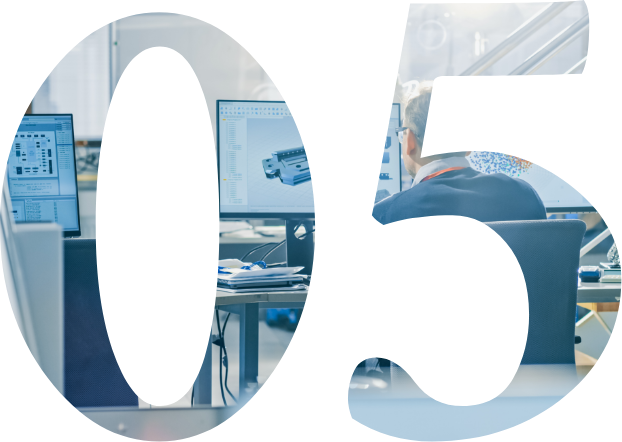
1
Once interested in the BCE program, you should set up a meeting with the BCE program coordinator to develop an individualized transfer pathway. Your individualized transfer document will help to guide your course registrations each semester, ensuring you are on track to apply to transfer in the future. In addition to this meeting, we recommend that you meet with the BCE program coordinator at least 1x per semester. It is also important to meet with your advisor/counselor at your current institution so that you can be supported before and after transferring.
2
The Universities at Shady Grove campus is open and ready for visitors! To have the best campus experience, please schedule a time for this visit with the BCE program coordinator. The tour will include stops at the Biomedical Sciences and Engineering lab space and classrooms, and an overview of the student services available to students at USG, a full-service campus.
3
There are always exciting opportunities happening at USG and in the community that will help you become involved on campus and also prepare you for a future career in the biotech/biopharma industry. A few resources we recommend you explore to stay informed include:
4
The fall early admission deadline for the Shady Grove campus is June 1. If you wish to be considered for merit-based scholarships, it is essential to submit your completed application by the College Park campus early admission deadline (March 1 for fall).
Transfer applications to the Shady Grove campus can arrive after the early admission deadlines as there is no final deadline for admission – but why not submit your application as soon as possible! Applications are reviewed on a rolling basis, which means you will be notified of your admissions decision shortly after all application materials have been received.
5
Online application through StandOut Admissions Network.
Non-refundable $75 application fee. For information regarding application fee waiver eligibility, please review the Fee Waivers page.
Official copy of your college transcripts and list of courses in progress.
Letter of recommendation (optional).
Activities and awards list or resume (optional).
6
In the next section of this guide, we provide specific tips on how to navigate the StandOut Admissions Network application, write a compelling essay, and submit transcripts from your previous institutions.
7
After submitting your transfer application, you will be eligible to apply for scholarships specifically designed for students planning to study at the Universities at Shady Grove. Keep in mind you may be eligible to apply for scholarships from many different sources, and you are encouraged to explore all potential opportunities! Special attention should be given to the following USG and UMD-specific scholarship resources. Applications should be completed as soon as possible after submitting your transfer application.
USG Scholarships - Submit ONE application to be considered for all USG scholarships, based on applicant eligibility
Don't miss our stories, research, and insights for tomorrow’s biotech professionals—subscribe for email notifications.
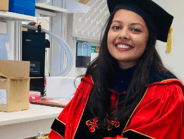




.png?width=184&name=sample2-large%20(1).png)
Engineering, much like navigating the transfer process, is about finding solutions to complex problems and scenarios. Being a successful engineering transfer student will require you to tap into the same set of skills engineers use daily – organization, tenacity, and problem-solving. Additionally, no engineering problem is solved without the help of a team. We encourage you to make use of the available resources – including your STEM, UMD, and Biocomputational Engineering advisors – to tackle the otherwise complex process of transferring.
To get you started, we have compiled insider tips to help you navigate UMD’s transfer application, ensuring you submit your best application.
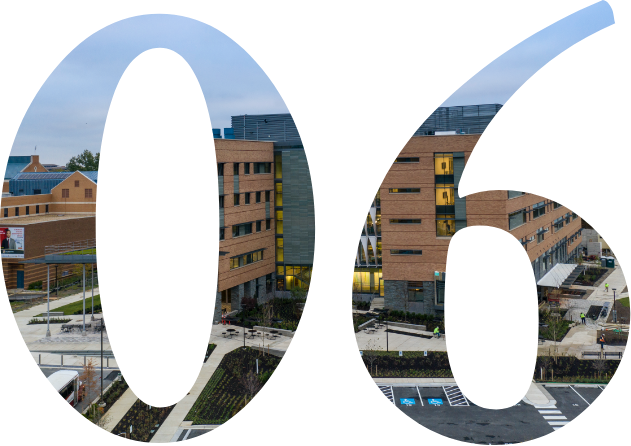
The first step for applying to UMD is to create an account in StandOut Admissions Network. Creating an account will allow you to save your progress in each section, so that you do not feel pressured to complete the entire application in one sitting. You will work through 3 main components in the application. Here are a few helpful tips for each section.
Most college applications have an essay component. Don’t let this portion of the application be the reason your application is on hold for being incomplete. While you will have a variety of prompts to select from for your essay, as a transfer student it is highly encouraged to write an essay response to the following question: Why are you interested in pursuing a degree in Biocomputational Engineering at this point in your academic career? The maximum length of this essay is 550 words or about 1 page single-spaced. Use this opportunity to tell the admissions team more about you, why this degree program would be a good fit for you, and what you have done to prepare yourself to get to this point. Each student has a unique journey and you are encouraged to add any details about your background and identity that are meaningful to your application, or obstacles that you have faced in your past that helped shape your future and bring you to this point in life.
When applying, you must submit transcripts from ALL previous institutions that you list as attended on your application. Your application will be considered incomplete until all official transcripts and your application essay are received. This means that you can not be offered admission to Biocomputational Engineering even if you meet the admissions criteria - don’t let this happen to you!
Through your StandOut Admissions Network application, you will have the option to submit your official transcripts electronically. This method is preferred since it will be the quickest way for your official records to be received and reviewed, also giving you the ability to track the status. If your transfer institution does not have an electronic submission option, please complete the request to send your official transcripts to:
University of Maryland
Office of Undergraduate Admissions
Mitchell Building
7999 Regents Dr.
College Park, MD 20742-5235, USA
Optional items which will not keep your application incomplete, but are welcome to be submitted include: one letter of recommendation, an activities and awards list, and/or resume. Letters of recommendation can be an excellent component of your portfolio. Consider requesting a letter from someone that can speak to your strengths and abilities and how your skills would make you a good fit in the Biocomputational Engineering degree program. Examples of good recommenders to approach for a letter might include current or previous instructors, teachers, or supervisors that you developed a connection with throughout your time as a student or employee.
A complete application to the University of Maryland at Shady Grove includes:
1)
Official transcript(s) from each college or university attended. Transcripts should be mailed, or sent electronically if possible, directly to the University of Maryland from the registrar of each institution. A final transcript must be sent upon completion of any coursework in progress.
If you have non-U.S. academic records for post-secondary work, please review our international applicant requirements as they might apply to you.
2)
3)
When completing your UMD application, you will be required to pay the fee on our secure website with a credit card at the time of application unless you have received a fee waiver. Fee waivers must be submitted prior to application completion for consideration. We cannot accept cash or check payments. For information regarding application fee waiver eligibility, please review the Fee Waivers page.
1)
You may choose to submit a letter of recommendation with your application. Recommendations must be sent to us directly from the recommender, and they can be written by anyone of the applicants' choosing including teachers, counselors, coaches and mentors.
2)
Detail your efforts in the community, arts, leadership, athletics, family involvements, work experience and other extracurricular activities and hobbies in order of interest to you.
You can submit this information via your StandOut Admissions Network Activities/Experience section or by uploading a separate document.
Discover how UMD's degree can propel you into a thriving biotech career in our guide.

The following FAQs were selected from the UMD admissions pages and will be helpful to consider throughout your application process as a transfer student. A complete list of all FAQs can be found here: Application FAQs.
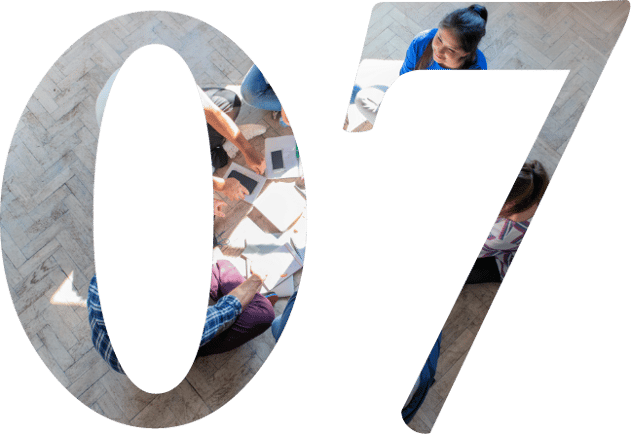
Please refer to our essay questions page for the transfer application essay prompt. While you will have the option to answer a variety of prompts, transfer students are strongly encouraged to answer the general question: Why are you interested in this UMD degree program at this point in your academic career?
There are three main components of the StandOut Admissions Network platform: The Application Portal, the Locker, and the Collaboration Space. UMD only requires applicants to utilize the Application Portal to submit their application. While students are encouraged to use the Locker and Collaboration Space to prepare for the admission process and get feedback from teachers and mentors, we do not require their use. UMD admissions staff will not review nor have access to the items in an individual student’s Locker.
No. The Locker is a private space for students to invite their academic advisors, teachers, and mentors to review documents prior to submitting them as part of their application. UMD admissions staff do not have access to a student's Locker and will not review application materials prior to their submission.
You can learn more about the Locker by watching this brief Locker overview video.
No. At the top of the page, there will be a box you can select that states I have finished adding my courses. Please select that box and you will be able to bypass the High School Course section of the StandOut Admissions Network profile.
You will receive an email notifying you when your admission decision is ready on the StandOut Admissions Network platform. Follow the instructions listed in the email to view your admission decision online. For security purposes, please note that we cannot reveal admission decisions over the phone.
If you are offered admission to UMD, you will also receive a general welcome letter from our office in the mail a few days later.
We keep a record of test scores and transcripts you submitted for previous applications. You must submit any new transcripts and/or test scores that were not available when you last applied.
Although you are completing your degree at USG, you are still a UMD student! The tuition will be the same; however, fees are slightly less for students attending the USG campus. Visit the Office of Student Financial Aid website to review the estimated tuition and fees for UMD. Please be sure to note differential tuition costs for Engineering students.
The deadline to submit the FAFSA is January 1. The school code for the University of Maryland is 002103. We encourage you to review this additional information on filling out the FAFSA.
In order to qualify for in-state tuition, a student must prove that they (or the parent/guardian of a financially dependent applicant) is a financially contributing citizen of the state of Maryland and has been so for at least one full year (12 consecutive months). To demonstrate eligibility for Maryland residency, students must submit the residency questionnaire portion of the admission application. Residency can be determined by factors such as holding a Maryland driver’s license, paying Maryland taxes and proving that the primary reason for living in Maryland is not to attend the university.
The UMD Transfer Course Database is the best place to explore transfer equivalencies. Once you enter your transfer institution you may search by course or view a complete listing of all accepted courses.
Hopefully this guide has served as a valuable resource to help you develop a seamless transfer pathway from your current institution into this exciting new Biocomputational Engineering degree program. We appreciate that every student has a unique academic journey and we want to hear about it! Set up a meeting with our BCE program coordinator to discuss your individual needs.
We look forward to seeing a transfer application from you in an upcoming semester!

You've already got a passion for computers, biology, and solving problems. Now, you're ready to use those interests for the advancement of science, health care, and the greater good. Learn more about the new Biocomputational Engineering degree at the intersection of technology and life science.